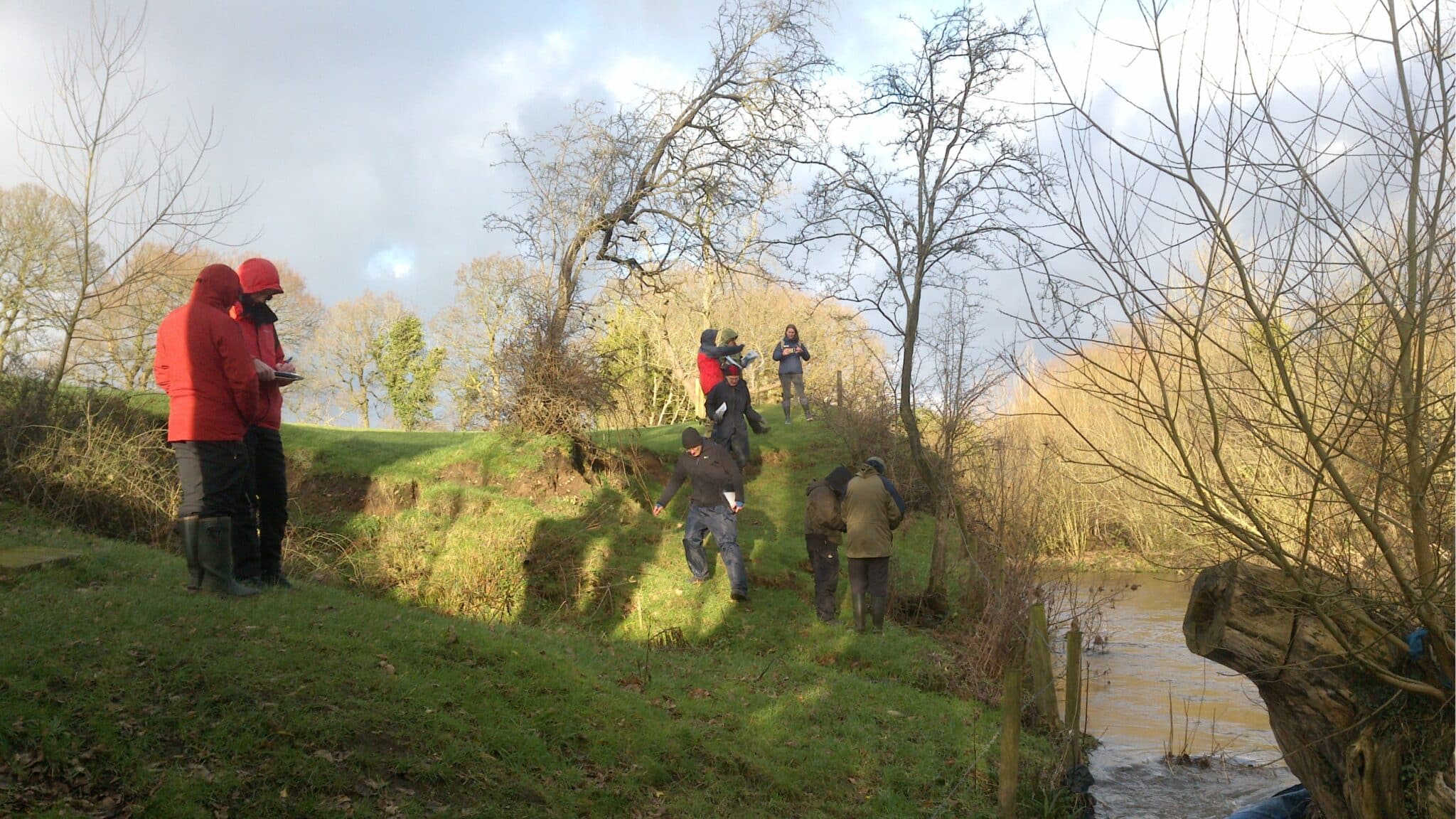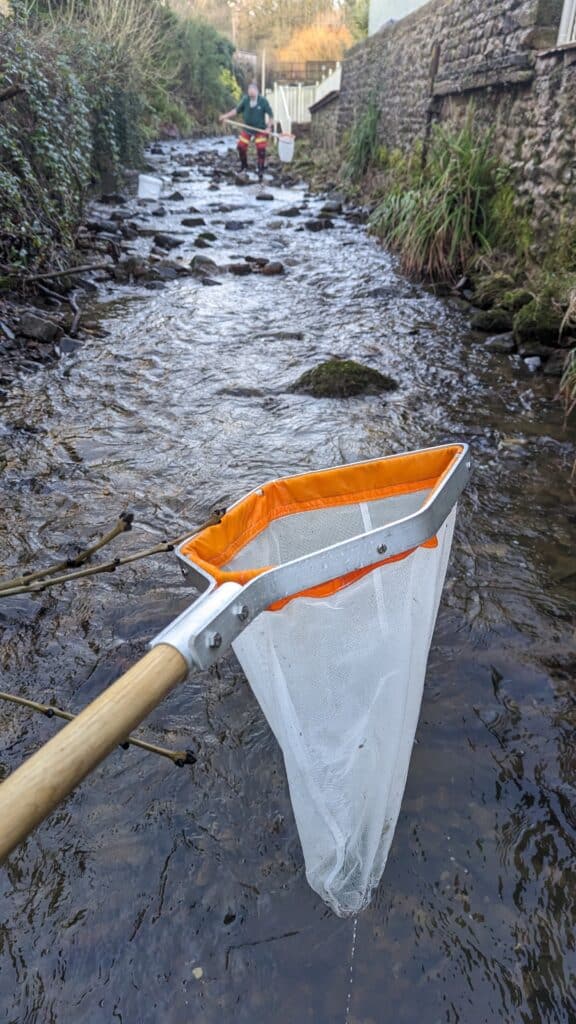
CITIZEN SCIENCE
THE PEOPLE BEHIND THE DATA
Citizen science is a really important part of our work. Like all of our volunteers, these specially trained groups include people from a wide range of backgrounds. But they all share one thing in common- a passion for nature and the outdoors.
Together, they take part in training courses and events, learn about the natural world around them, then use their skills to collect data for us. It works both ways too. Whilst we get valuable data and evidence, each citizen scientist gets all the training and equipment they need for free. Plus, many of our citizen scientists have noticed big improvements in their health and wellbeing. Improved mood, increased relaxation, and better physical health are just some of the benefits.
Over the last few survey seasons the Ribble Trust team have made big changes to our programme. By making data more accessible, standardizing methodologies, improving health and safety practice, and communicating more effectively we’ve managed to improve the experience for our citizen scientists.
So, What is citizen science?
Citizen scientists play a critical role in environmental and river conservation efforts. These volunteers are often local residents who have a deep connection to the natural world and a desire to protect their rivers, and the wildlife that relies on them, from harm. Through their participation in various citizen science programs, these individuals collect valuable data that can be used to monitor changes in water quality, track the movement of wildlife, and identify potential threats to the environment.
This data can then be used to influence everything from woodland creation to farmland habitat schemes to barrier removals. As the eyes and ears of the catchment, our citizen science groups are often the first to notice patterns in data, changes to rivers, and issues. Plus, by providing a wealth of data, citizen scientists enable organisations like Ribble Rivers Trust to better target our work. This means we can make more informed decisions about which projects are needed to protect and improve rivers and other vital natural resources.
In addition to providing valuable data, citizen scientists can also help to raise awareness about environmental issues and engage the public in conservation efforts. By empowering local residents to take an active role in protecting their environment, citizen science programs can foster a sense of community ownership and responsibility for the natural world.

Our citizen science activities
Priority habitat surveyors
As part of the HEAL project Ribble Rivers Trust have recently teamed up with the Freshwater Biological Association to provide Priority Habitat training. The surveys that our volunteers carry out help to form a picture of river naturalness. A more natural river is generally a healthier river which is capable of supporting a greater range of biodiversity. Sites that score badly can potentially be improved with links to future and existing projects, whereas sites that score well might benefit from maintenance rather than active work.
These surveys look at four naturalness factors; biological, chemical, hydrological, and physical. These are the same four factors that make up a Water Framework Directive score. This means they are comparable to findings by the Environment Agency.
Bat surveyors

This group monitors bat populations across the catchment. Although bats and rivers might not be a common association, they do have a very strong link. Mainly as rivers produce lots of insects, which is a bats staple diet. So, you can often find bats flitting up and down rivers and streams at dusk. The healthier a river, the more insects, and the more insects, the more bats. Additionally, rivers with tree cover see even more bats. This is because trees and vegetation encourage river insects to stay close to the water rather than drifting away.
Our citizen science volunteers monitor bat populations before and after we complete projects. Plus, they record bat presence across the catchment to assess habitat quality.
Otter surveyors
As the name suggests, otter surveyors look for signs of otters. These once critically endangered and heavily persecuted mammals were once close to extinction. However, they are happily making a slow and steady come back. Again, otters rely on healthy river systems for food and homes. Although otters have quite a wide territorial range, they also need a lot of food. A large otter population reflects a large fish, amphibian, and crustacean population, which means that rivers must be healthy and well-functioning ecosystems.
Otter surveyors don’t actually look for otters, they look for evidence of otters. This is usually spraints (poo), anal jelly, footprints, holts, and leftover food or signs of foraging.
Riverfly monitors
Riverflies are another important part of a healthy ecosystem. These tiny insects form the basis of all river ecosystems, providing food for everything from other insects to fish to birds. Of course, these then go on to provide food for other, larger animals. Riverflies are easy to collect and count and as our volunteers only have to identify eight species to group level, it’s relatively easy (with a little practice!).
The Riverfly Partnership’s riverfly monitoring scheme was one of the Trust’s first attempts at gathering and using data through citizen science. Over 130 sites have been monitored since 2010 with almost 2,000 results submitted. These results have helped us to identify pollution incidents and discovered invasive species never reported in the catchment’s rivers.

Barrier surveyors
The fifth survey in our citizen science arsenal is barrier surveys. Barriers such as dams and weirs prevent wildlife from moving up and down rivers to feed and breed. This is particularly problematic for fish such as salmon and trout, who need to move upstream to breed, and for mammals such as otters who will often attempt to move upstream by crossing roads at night when in river barriers can’t be passed.
Each barrier surveyor identifies barriers then assesses the barrier type (e.g. weir from a mill race), as well as age, size, how passable the barrier is, and it’s condition.
If you would like to take part in any of our future training sessions please drop us a line here.

